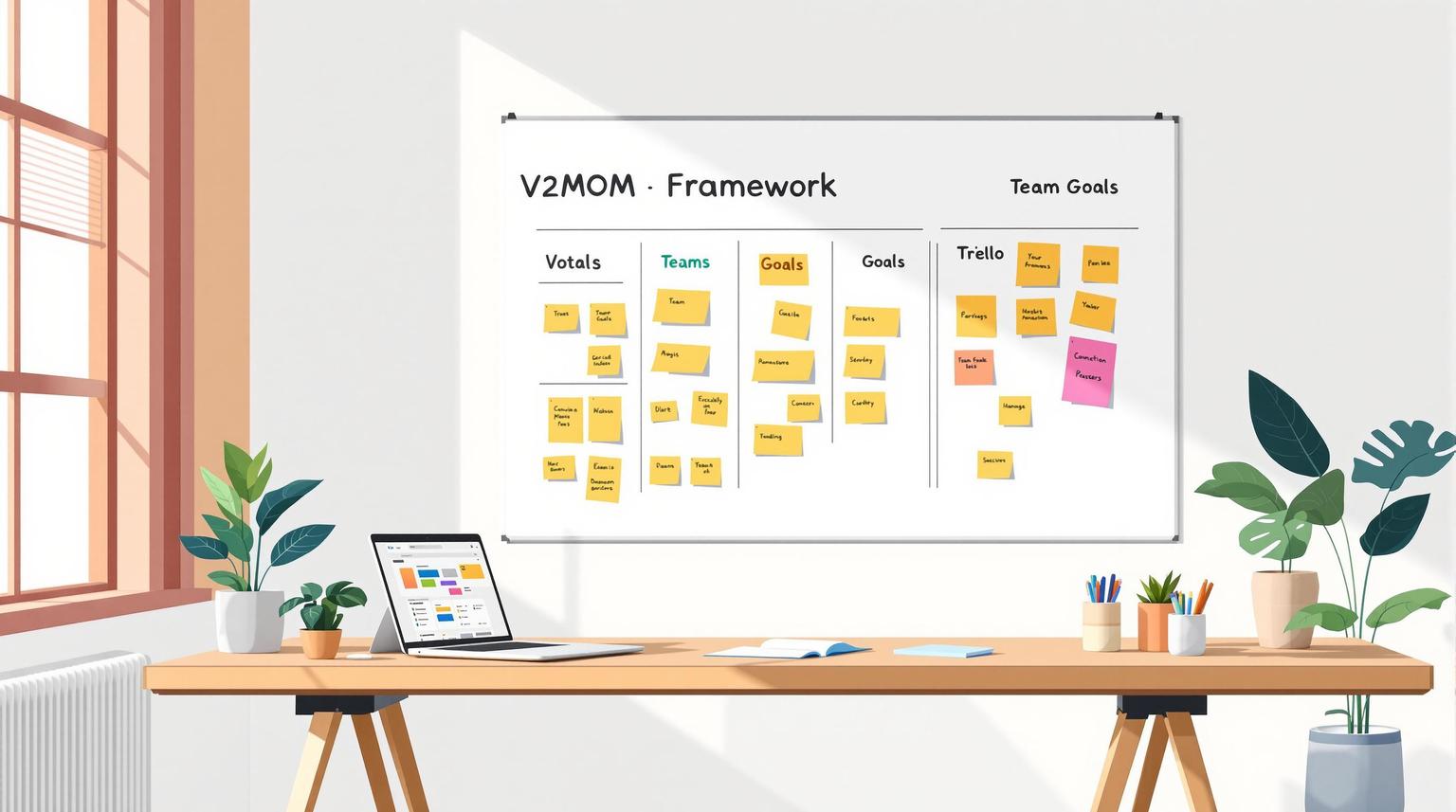In the high-stakes world of business, aligning your team's efforts with your organizational strategy can be the difference between thriving and merely surviving. Yet, many organizations struggle with vague goals, misaligned objectives, and a lack of clarity in execution. This article explores practical tools and actionable insights to achieve strategic alignment, inspired by a comprehensive session led by Andrew Constable, an expert in strategy and business model innovation. Whether you're a startup founder, a manager, or a leader in an enterprise, these principles can transform how your organization approaches alignment and execution.
Understanding Strategic Alignment: More Than Just Goals
One of Andrew Constable's fundamental points is that most organizations fail to distinguish between having a strategy and simply having a set of goals. While aspirations such as "being number one" or "growing market share" are common, they don't constitute a strategy. A true strategy involves making clear, integrated choices about where to play in the market, how to win, and what systems and capabilities are needed to succeed.
Roger Martin’s framework of five questions provides a solid foundation for defining strategy:
- What is our winning aspiration?
- Where will we play (in the market)?
- How will we win in those areas?
- What capabilities are needed to succeed?
- What systems will support this strategy?
Without answering these questions, organizations risk creating confusion and drifting aimlessly, often jumping from one new idea to another without long-term focus - commonly referred to as the "magpie strategy."
Bridging Strategy Formulation and Execution
A key takeaway from the session is the importance of treating strategy formulation and execution as a single, continuous process rather than two separate phases. Andrew emphasized that many organizations spend too much time planning and too little time executing. To overcome this disconnection, organizations must integrate strategy into every level of the business and treat its execution as an equally critical component.
He introduced the concept of Strategy Execution Imperatives, which act as the bridge between planning and implementation. These imperatives include engaged leadership, organizational alignment, a supportive culture, project and portfolio management, and performance tracking.
The Five Strategy Execution Imperatives
-
Engaged Leadership and Governance
Leaders must "walk the talk" by dedicating time to strategy discussions, championing the organization's goals, and modeling behaviors that align with the strategic vision. A shocking finding noted during the session is that many leaders rarely schedule time to focus on strategy, which can result in confusion and a lack of accountability among employees. -
Organizational Alignment
Alignment requires clear communication of strategic priorities across all levels of the organization. From top leadership to frontline employees, everyone should understand how their work contributes to the overarching strategy. Tools such as alignment checklists can help identify gaps in understanding and ensure departments are coordinating their efforts rather than operating in silos. -
Performance Culture
Employees need to feel connected to the mission and purpose of the organization. A lack of incentives or unclear roles can lead to resistance and disengagement. Assessing and nurturing cultural values ensures that the organization's strategy resonates with its workforce. -
Effective Project and Portfolio Management
Strategic initiatives often fail due to a lack of prioritization or resources. Andrew stressed the importance of distinguishing between strategic projects that impact the entire organization versus local, operational efforts. Organizations should also avoid overcommitting to too many projects, which can dilute focus and create frustration. -
Performance Information and Reporting
The final imperative focuses on tracking progress. Performance measures must align directly with organizational goals, and data should be used not just to report results but to learn and adapt. Frequent reviews of performance data enable organizations to course-correct and maximize their strategy's impact.
Tools and Techniques for Strategic Alignment
Throughout the session, Andrew shared practical tools that organizations can use to improve alignment and execution. Here are some highlights:
1. Strategy Maturity Assessment
This tool helps organizations benchmark their current strategic capabilities across areas such as leadership, culture, alignment, and performance measurement. By identifying strengths and weaknesses, teams can prioritize improvements and track progress over time.
2. Cultural Competency Self-Assessment
A strong organizational culture is critical to executing strategy. This assessment evaluates the alignment between your organization’s cultural values and strategic goals. It also identifies areas for improvement, ensuring employees are motivated and engaged.
3. Alignment Checklist
This simple yet powerful tool allows teams to evaluate whether objectives, processes, and communication efforts are properly aligned with the overall strategy. Questions such as "Are our strategic objectives at the right level of detail?" or "Do employees understand their role in achieving the strategy?" can spark meaningful discussions.
4. Project Charters
Clear documentation of strategic projects ensures that everyone understands the purpose, scope, risks, and stakeholders involved. This reduces misunderstandings and ensures alignment with broader organizational goals.
5. Measure, Perform, Review, Adapt Framework
This cyclical process emphasizes continuous improvement by defining objectives, setting clear performance measures, analyzing outcomes, and adapting strategies based on results. Regular reviews - ideally monthly - enable teams to learn and pivot quickly.
Overcoming Common Challenges
Leadership and Accountability Gaps
Leaders must take full ownership of the strategy and actively communicate its importance. Without consistent reinforcement from the top, employees may lack direction or motivation.
Siloed Departments
Silos can undermine collaboration and alignment. Regular cross-departmental meetings and shared goals can break down these barriers and foster teamwork.
Resistance to Change
Strategic shifts often require cultural change, which can meet resistance. Identifying "change agents" within the organization and addressing employee concerns early can smooth transitions.
Misaligned Projects
Organizations often waste resources on projects that don’t contribute to the overall strategy. Regular audits of ongoing initiatives can help prioritize those with the greatest strategic impact.
Key Takeaways
- Distinguish Strategy from Goals: A robust strategy involves clear choices about where to compete, how to win, and what systems and capabilities are required.
- Treat Strategy as a Holistic Process: Combine formulation and execution into a single, integrated approach.
- Emphasize Alignment: Ensure that all levels of the organization understand and contribute to the strategy.
- Use Tools to Identify Gaps: Leverage maturity assessments, cultural evaluations, and alignment checklists to uncover and address weaknesses.
- Foster a Performance Culture: Motivate employees with incentives and connect their roles to the organizational mission.
- Prioritize Projects Wisely: Focus on initiatives that align with strategic goals, and avoid overextending resources.
- Regularly Review and Adapt: Frequent performance reviews allow for learning and timely course corrections.
Final Thoughts
Achieving strategic alignment is not a one-time effort; it’s a continuous process that requires commitment from leadership, effective communication, cultural support, and disciplined execution. By adopting the tools and insights shared in this article, organizations can bridge the gap between strategy and action, fostering alignment and driving measurable success. Remember, strategy isn’t just a document - it’s a way of operating that should permeate every aspect of your business. Now’s the time to start aligning your team for the future.
Source: "Strategic Alignment Made Practical Tools You Can Use Immediately | Andrew Constable" - Informa - Middle East, YouTube, Jan 1, 1970 - https://www.youtube.com/watch?v=HPjddv8zWCg
Use: Embedded for reference. Brief quotes used for commentary/review.


